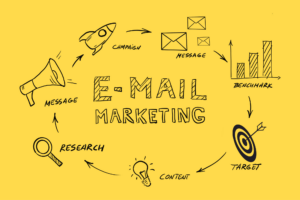If someone were to ask what your greatest challenge is when creating content, what would you tell them? According to a survey done by the Content Marketing Institute, 60% of B2B marketers say it’s being able to create engaging content and I would agree with that… for the most part. The only reason I say that with hesitation is because I think to write engaging blog headlines is the greatest challenge.
As marketers, you already struggle with getting people to read your content. But if the gatekeeper to it all (i.e. the headline) stinks, you really won’t stand a chance. Without that click-through, there’s really no other way to get people’s eyes on the words that matter.
So, today, I’m going to reveal a kickass formula that will help you write engaging headlines that don’t suck.
7 Ways to Write Engaging Blog Headlines That Don’t Suck
You might not be a master copywriter and you might not even have much experience in the way of marketing. But that shouldn’t stop you from writing killer headlines that your audience can’t help but click on.
Here are 7 steps to write engaging headlines that are instantly more clickable and suck less.
1. Focus Around a Keyword
Every blog post should be optimized around a focus keyword. For one, because it helps you tell a cohesive and consistent story all the way through. And, secondly, because search engines love it.
So, once you know what your post’s focus keyword (or keywords) is, make sure to weave it into the headline—and place it as close to the front of it as possible.

2. Offer a Solution
Keep your headlines relevant to the message of your post and, above all, make a promise to your readers.
Will you give them 21 reasons to become fans of the Dolphins this year? Will you teach them a more effective way to call out sick when they’re not sick? Will you show them how to nurture a baby seal back to health? Your headline should offer a solution or answer that your audience cares about.
If you’re not sure what your readers even care about, use a tool like Answer the Public to guide you to the questions they ask most. Or you can see what Google auto-complete has to say.
3. Be Brief
In terms of length, CoSchedule says that 55 characters is the sweet spot and will earn you the highest click-through rates. Outbrain did a similar analysis but focused instead on the number of words. They found that eight-word titles received 21% more clicks.
Just remember that headlines show up in a variety of places, so you have to play by their rules. Search engines will cut off titles that run too long, so check yours with the Moz Title Tag tool.
4. Add Labels
Writing isn’t everyone’s strong suit, but that doesn’t mean you can’t still have a blog on your site. It simply means you need to play to your strengths.
So, if your posts contain other forms of content—like infographics, video, podcasts, etc.—add a label to your headline. According to Hubspot, headlines that clarify the type of content contained within them perform 38% better than those without.
5. Use Attractive Words
You don’t have much time to grab someone’s attention with a headline, so make those 55 characters or 8 words count. You can do this by using stronger and more active words.

Inc.com has a great roundup from Twelveskip that breaks out 74 of the formulas (and word combinations) proven to work.
6. Use Numbers Too
If you have blog posts with a numbered list of items, definitely capitalize on it. You’ll see online publications like Buzzfeed do this a lot—and it’s because it works. In fact, 26% of their most popular articles are listicles.
Oh, and use odd numbers instead of even. For whatever reason, odd-numbered headlines receive 20% more clicks than even-numbered ones.
7. Run AB Tests to Find Your Goldilocks Formula
No one person is made the same, which means that what works for one blog might not work for your blog’s particular audience or your unique brand personality.
The six tips above are general best practices that should be adhered to, but there is always wiggle room in content marketing. So, use A/B testing to find your blog’s sweet spot (your content management system should have tools to help with this). You may find that your readers are more apt to click on links containing the word “sexy” instead of “pretty” or that they want more inspiring headlines than negative ones.

You’ll never know what will increase the clickability of your headlines until you test out the possibilities. Using these tips will help you write better headlines and increase the readership of your blog.
Looking for more blogging tips or help to grow your small business? Make sure you check out the VirTasktic Blog to find all the small business advice you will need.










